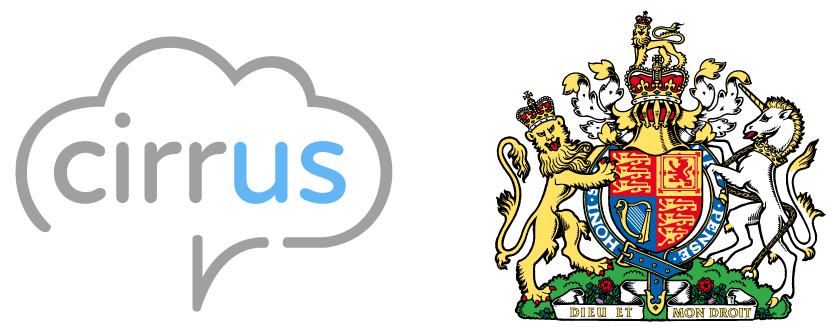This article is featured on CX Today.
The concept of an “omnichannel contact centre” is nothing new. Yet, creating such an environment is still top of the agenda for many – as it remains tricky to achieve.
Indeed, PwC found only 10% of UK companies are delivering a truly seamless, omnichannel customer experience. That is creating problems for customers, agents, and operations alike.
“Great customer experiences start with the right blend of technology and human interaction,” according to Jason Roos, CEO of Cirrus. “Contact centre agents too often find themselves held back by technology that’s not fit for purpose.”
“Spending hours on manual tasks instead of boosting customer engagements is an ineffective use of contact centre time and resource, which is why technology is playing a major role in transforming the contact centre space.”
Thankfully, an omnichannel contact centre provides an aligned ecosystem, where the context of customer conversations and valuable data can be preserved from end-to-end. Gathering that context and applying automation will help maximize customers, agents, and business outcomes.
Yet, let’s not get too far ahead of ourselves. First, contact centres must build that omnichannel ecosystem, which – as the PWC study suggests – is an almighty undertaking.
Step 1: Connect Every Channel within a Single Platform
The first and most important step in developing a truly omnichannel contact centre is synchronizing all of the channels used to communicate with customers. This means investing in a flexible environment, often based in the cloud, that bridges the gap between everything from voice and email to social media, web chat, video conferencing, and even self-service channels.
Creating a truly connected omnichannel experience means ensuring every part of the CX ecosystem can share the same data and be accessed by employees in the same pane of glass.
A fully omnichannel platform doesn’t just link together communication methods, it also provides access to the other tools CX agents need to thrive, from CRM integrations to business knowledgebases, workflow management tools, and even analytics services.
The right solution will provide agents with a fully unified dashboard, which allows them to move with customers, across channels, without switching tabs or software, all while retaining access to conversational context and customer data.
Step 2: Create Pathways Across Channels
Once all of the tools necessary to deliver an excellent customer experience are aligned in the same ecosystem, the next step is bridging any gaps between the systems.
An omnichannel contact centre allows for “connected conversations” which allow both agents and customers to switch effortlessly between channels without having to repeat themselves or start again.
A customer should be able to choose to start their service journey with an AI bot or assistant, then shift to talking to an agent instantly, taking all of their information and historical data with them. Customers also need to be able to switch their ongoing conversation from one channel to another, moving from web chat to a call, to SMS, and so on. Creating paths for escalation across channels helps to reduce customer effort score and improve agent productivity.
Click-to-call and click-to-chat links are particularly valuable here, allowing for data to be transferred through channels from the original interaction. Crucially, it’s also important to ensure every agent can transfer customers and their contextual details to other agents painlessly.
Step 3: Preserve a Unified View of the Customer
Creating a true omnichannel contact centre doesn’t just make life easier for customers and agents, it also provides opportunities for companies to deliver a more seamless, personalized experience, with behind-the-scenes insights into the customer journey.
A truly omnichannel contact centre won’t just transfer information during a conversation to the right agent across channels, it will also allow organizations to build comprehensive profiles, collecting data about previous purchase histories, interactions, and even customer sentiment.
In a fully omnichannel contact centre, agents won’t have to cross-reference data across multiple platforms while customers sit on hold, they’ll be able to see previous conversation histories, transcripts, and CRM data in one place.
Full omnichannel contact centres will also give companies an opportunity to pull additional data into customer profiles, from various touchpoints throughout the customer journey.
For instance, they might allow teams to pull information from third-party review sites, to help them pinpoint brand advocates and customers in risk of churn.
Step 4: Bring Analytics into the Equation
Finally, with a truly omnichannel contact centre, companies don’t just get a single environment to manage and monitor customer interactions; they also get a single, unified view of valuable data.
Analytical tools built into the contact center allow companies to build a comprehensive insight into the customer journey map, and the touchpoints of each client.
The most innovative solutions provide real-time insights into everything from customer intent and sentiment to customer progress. This helps to keep agents productive and reduces the risk of customer churn.
Conversational analytics tools can also be utilized to help businesses pinpoint opportunities in the customer journey.
They can use AI solutions to determine when the best opportunities exist for up-selling and cross-selling, or to determine which issues on which channels are most likely to lead to a lost customer.
This provides business leaders with the insights they need to constantly upgrade, enhance, and improve their omnichannel strategy, based on what they learn about their audience.
Creating a Full Omnichannel Contact Centre
There’s more to building an omnichannel contact centre than simply stitching communication channels together. A true omnichannel solution reduces customer effort scores, improves employee productivity, and opens the door to more personalized, convenient customer experiences.
“By implementing a unified contact centre environment, agents can access the full customer conversation, history, and insights from various platforms in one place,” adds Robert Ansell, Solution Sales Director at Cirrus,
“This not only streamlines the service for customers but also empowers agents to provide a more convenient and consistent experience.
“It’s a win-win situation that truly enhances the customer-agent interaction.”
The result isn’t just better customer and agent loyalty but reduced operational costs and opportunities for increased revenue and growth too.




